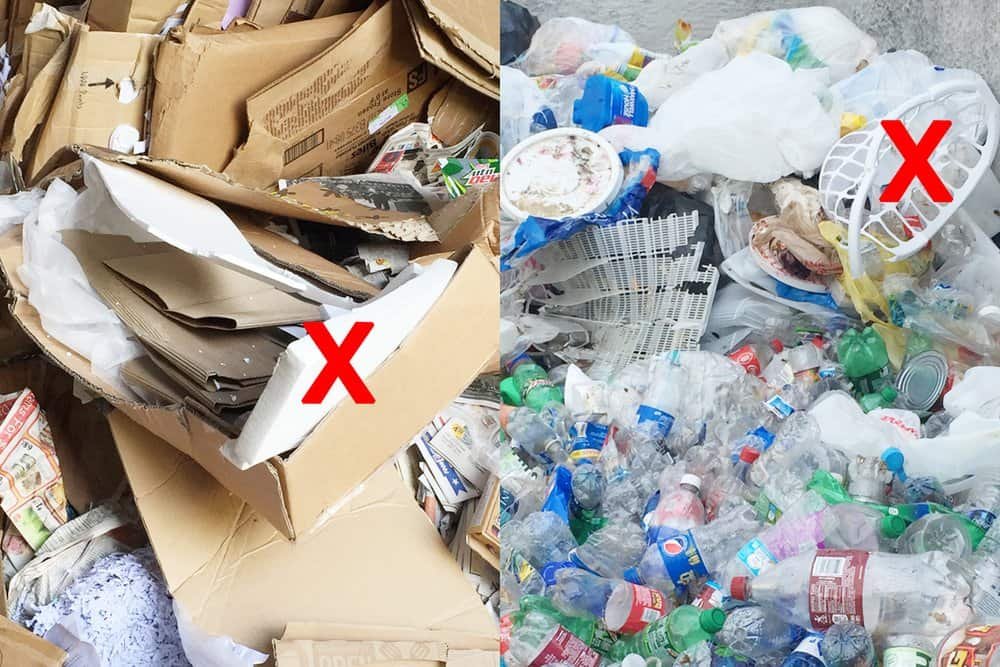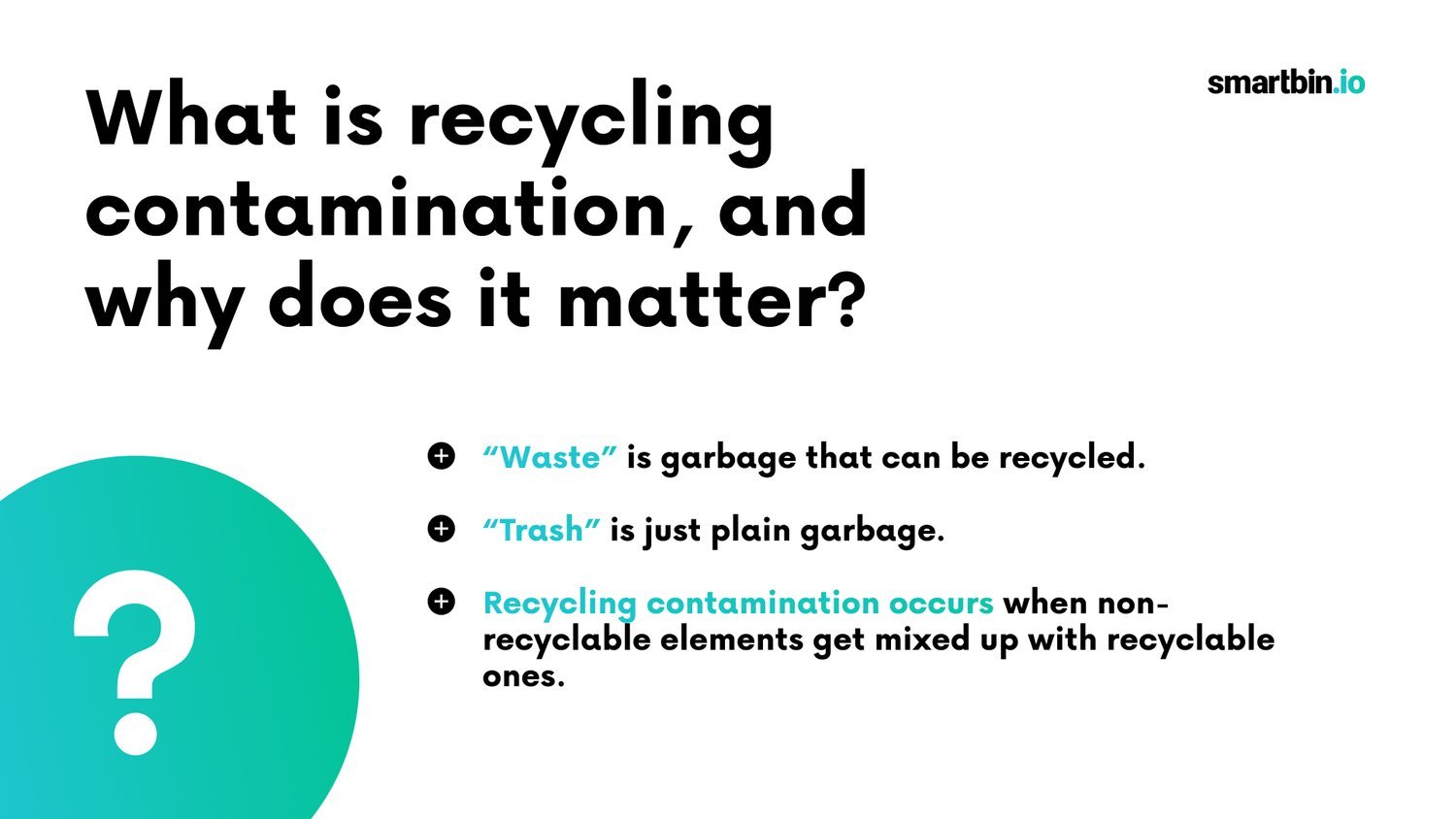What Is Recycling Contamination, And Why Does It Matter?
What’s the difference between trash and waste? No, this is not an arcane riddle meant to stump you. It is in fact an important practical question. In the world of recycling, the distinction between “trash” and “waste” is more than just semantics. Indeed, the two categories are diametrically opposed. If you want to be smart about how you manage your garbage, you’d be well served to know the difference.
First, identify what is waste and what is trash. “Waste” is garbage that can be recycled. “Trash” is just plain garbage. Recycling involves more than just throwing a soda can in a certain coloured bin. It’s about management, efficiency,
responsibility, and small steps that add up to big results.
Recycling contamination occurs when non-recyclable elements get mixed up with recyclable ones. The consequence of recycling contamination is primarily twofold. One: less waste is recycled. And two: larger landfills crowded with trash.
Don’t sweat it - it is impossible to remember the thousands of products available to us and their recyclability.
Avoiding recycling contamination is the reason we separate different kinds of waste in different coloured bins. These bins are intended to classify garbage according to certain guidelines, depending on the rubbish’s particular material and composition. Potential contaminants are legion. They can be hazardous and toxic, such as batteries. They can be ordinary and ubiquitous, like scraps of certain plastic. Or they can be biodegradable and organic, such as leftover food. It doesn’t matter what form it takes, if it violates the requirements for other things to be recycled, it is a contaminant. And contaminants cause big problems for processing waste.
To understand this concept more deeply, let’s follow the life of some garbage, after it’s thrown away into the bin. When a piece of garbage gets discarded, its story is just beginning.
The bins that are available in whatever facility the trash is being thrown in are managed and monitored by operations teams and sustainability professionals. These two departments are constantly working together to ensure a safe, clean and environmentally responsible facility. It’s their job to make sure that there are waste bins readily available and that they offer options that cover all different types of waste. Usually there will be signage or markers to notify you where to discard of your waste. These facilities are publicly graded on how well their recycling programs work and are billed by waste haulers for trash and paid for their recycling.
Photo by Jay Clark via Unsplash
Next, waste management haulers collect the content that’s been thrown away. Then, the trucks transport all this content to a material recovery facility. Inside this center, the collected garbage is separated according to its components. In order to efficiently achieve this Herculean task, the garbage is fed through specialized systems involving machinery such as fans, magnets, and meters of various kinds.
At the end of this complex automated process, human workers are required to carefully sort the remaining contaminants by hand. By contaminating your recycling with non-recyclable trash, the cost to manage this recycling becomes very expensive. Ultimately increasing the cost of the recycled materials that get sold and are made into new products. By eliminating waste contamination, we can create a healthy circular economy in our waste and recycling supply chains and ensure that all recyclable materials go back into the supply chain as new products for us to use.
Recycling is broken because this is what it all looks like at the end of its life
The primary goal of recycling and waste management is to avoid landfills. Simply put, landfills are toxic and dangerous.
They negatively impact the surrounding environment and are a detriment to the health of people living nearby. Landfills are tremendous contributors to the climate crisis, due to the greenhouse gasses released through decomposition. Finally, landfills emit tonnes of noxious material that seeps through the earth, polluting the water table and poisoning the soil. Each year, staggering quantities of waste that could have been recycled ends up in landfills as a direct result of trash contaminants.
One person produces a lot of trash in one year, and North Americans produce the most trash of anybody. The average North American citizen produces more than 1,600 pounds of garbage each year, roughly three times the global average.
Tragically, only 9% of this is getting recycled in North America.
Photo by Nadiia Ganzhyi on Unsplash
REDUCING RECYCLING CONTAMINATION
Recycling contamination pollutes nature and contributes to more resources being depleted from our planet. The good news is that we can solve this complicated problem by creating intelligent and efficient waste management systems.
Technologies are available today to increase recycling rates and lower the costs of waste and recycling management. Computer Vision, Machine Learning and Robotics are now a reality in our complex real world environments. They bring new capabilities in managing waste and recycling autonomously, thus, lowering the cost related to managing our waste and recycling.
How our company is building tools to fight the good fight
Our company offers knowledgeable solutions and innovative techniques for commercial waste management in buildings across North America. We have painstakingly designed a system aimed at reducing the environmental and social impacts of recycling contamination and landfill pollution.
Our smart bins are more than just receptacles that collect garbage. We employ proprietary sensors to track the fill-levels of our bins in real time and transmit the relevant information to our software. We utilize cutting edge technology to constantly improve our smart bin’s ability to manage trash. Combining data analysis and machine learning, our system produces reliable and sustainable results.
We are currently building two new products lines which include the use of robotic collecting and sorting technologies. These two new product lines will help our customers lower their costs associated with waste and recycling, alleviate labour shortages faced by the industry, promote clean and safe environments and increase waste diversion rates to up to 99%.
Responsible waste management is more than just a business. We deal in environmental safety that affect the very future of our planet. Intelligent transformation and optimization of current models is the only path forward.
Sustainability goals cannot be achieved without efficiency. Money and resource cannot be wasted like trash, and we only have one planet to work with. We’d be honoured to provide you with the training, expertise and resources required to help your community do its part in cultivating a healthy, regenerative and resilient world for future generations to enjoy.






